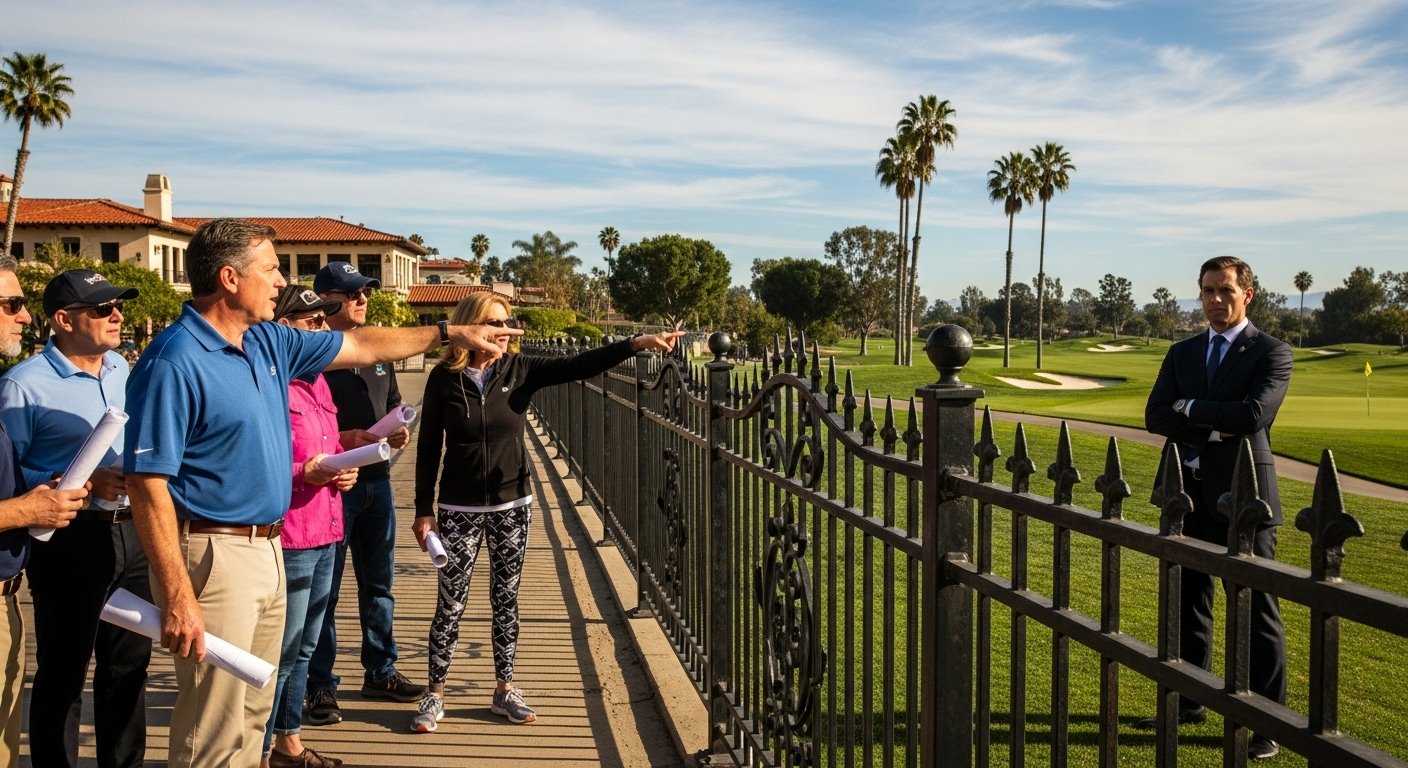Table of Contents
Introduction
Everyone loves peaceful green spaces, especially in a beautiful place like Montecito, California. But recently, not everyone has been feeling the peace. There’s been a growing issue called the Montecito Country Club easement dispute, and many neighbors are starting to talk about it.
At its core, the dispute is about access to land. Some say a private club is using land that doesn’t fully belong to them. Others claim they have every right to use it. The rules around easements—which allow someone to use another person’s land in a certain way—can often get tricky. That’s exactly what’s happening here.
In this article, we’ll break down everything you need to know about the Montecito Country Club easement dispute. We’ll explain the issue in simple language, share why it matters, and help you understand both sides. Whether you live in Santa Barbara County or are just interested in land rights, this guide is for you.
Let’s look at what’s going on and why it has people paying attention.
Where Is the Montecito Country Club?
The Montecito Country Club is located in sunny Santa Barbara County, California. It’s nestled in one of the most beautiful and high-end neighborhoods in the state—Montecito. This area is known for ocean views, quiet estates, and A-list celebrity residents.
The club itself has existed for nearly 100 years and features golf, tennis, swimming, dining, and stunning grounds. Over the years, it has grown and been remodeled several times, becoming one of the top clubs in the region.
But like many long-established properties, the Montecito Country Club shares land borders with neighbors. This is where easements come into play—and where the current Montecito Country Club easement dispute began.
What Is an Easement?
If you’re new to real estate terms, don’t worry. Let’s keep it easy.
An easement is a legal agreement that gives someone the right to use part of another person’s land for a specific reason. For example, someone might have an easement to use a pathway through their neighbor’s yard to reach the beach.
In most cases, easements are peaceful and go unnoticed. But if one side feels the land is being misused—or rights are being unfairly taken away—a dispute can happen.
That’s what’s at the heart of the Montecito Country Club easement dispute. It’s a disagreement about how land should be used, who should use it, and what the law really says.
How Did the Easement Dispute Start?
The story has several layers, but here’s the basic version.
Property owners near the Montecito Country Club have claimed that part of the club’s land improvements—like landscaping, fencing, or pathways—might be on land where an easement lets others pass through or share space.
These homeowners believe that the club may have used the property in a way that blocks or limits those rights. Some have expressed concern that these changes break earlier land-use agreements or long-held traditions.
As a result, some neighbors have taken legal steps to stand up for their easement rights. That’s how the Montecito Country Club easement dispute went from whispers to courtrooms.
What the Country Club Says
Of course, the Montecito Country Club and its legal team have their own side of the story. They argue that their use of the land is legal, well-documented, and within their boundaries. They believe that they’ve taken care to honor old agreements and stay within allowed limits.
They also claim they’ve made improvements with community beauty and safety in mind. In other words, they didn’t just put up a fence—they built features that improved the views, safety, and value of the area.
They feel confident that their actions do not break easement agreements and are prepared to defend that view in court, if needed.
This difference of opinion is where the Montecito Country Club easement dispute becomes a legal balancing act.
Why the Dispute Matters to Homeowners

For nearby homeowners, easement rights aren’t just legal talk—they’re real, everyday issues. Some homeowners may have depended on that easement to access parts of their property or even to enjoy walking paths long shared by neighbors.
If those rights are blocked or reduced, some fear their property values could fall. Others are worried about losing part of what they feel makes Montecito so unique—a sense of openness and shared care for the land.
That’s why the Montecito Country Club easement dispute isn’t just about fences or plants. It’s about local values, neighbor agreements, and trust between the community and big institutions.
Legal Elements of the Dispute
From a legal point of view, several issues are at work in the Montecito Country Club easement dispute:
- Prescriptive easements: These are easements created over time through continued use, even if there isn’t a written agreement.
- Encroachment: If the club’s structures extend onto land owned or legally shared with others, that could become a legal problem.
- Access rights: Whether the club’s improvements make it harder for certain groups to use the land as they traditionally did.
Lawyers from both sides are examining old maps, past agreements, and land surveys to make their cases. This is why resolving easement disputes usually takes time and close study.
How Are Courts Handling the Case?
If the Montecito Country Club easement dispute heads further into the courts, it may involve judges reviewing legal documents, hearing witness stories, and even sending survey teams to the land.
Courts usually examine:
- The history of land use
- Whether there’s written proof of easement agreements
- How ongoing use has shaped who has rights to do what
In California, many cases turn on something called “reasonable use.” If one party’s actions make life harder for another beyond reason, courts may ask for fixes—even if no law was broken.
That’s a big part of what’s being decided here.
Local Reactions and Media Coverage
Because Montecito is home to many famous residents and is well-known for elegant living, the easement dispute has caught public attention. Local newspapers and blogs are covering the dispute. Some neighbors are sharing opinions online. Others are organizing meetings to talk openly—and respectfully—about their concerns.
People are showing mixed feelings.
Some say the club should be more open with their changes. Others feel private property rules should stay strong. Most people just want a fair answer that brings peace—and doesn’t ruin the community feel.
Whatever happens, people are watching closely.
Impacts on Membership and the Community
The Montecito Country Club easement dispute could also affect the club’s image. Members come for a high-quality, peaceful experience. That’s harder to enjoy during public disputes.
If the issue grows, some non-members may feel less welcome or wonder if the club is growing too fast for the neighborhood. On the other hand, some believe new upgrades are good for the area, even if it takes time for everyone to adjust.
Striking a balance between club services and local harmony will be key going forward.
Environmental Considerations in the Dispute
Easement disputes often include more than just people. They also affect plants, trees, and local wildlife.
Neighbors in Montecito have raised concerns that changes to the land may have:
- Removed native plants
- Disrupted walking trails used for decades
- Affected local bird habitats
If true, these changes could call for environmental review or even restoration.
Because Montecito is known for natural beauty, eco-concerns are a big part of the Montecito Country Club easement dispute.
What Might Happen Next?
The next steps may include more talks between neighbors and the club, possible settlements, or court dates. If a solution can be reached outside of court, it may save money and time for everyone.
In many cases, disputes like this end with:
- Clear land surveys
- Adjusted property lines
- Easement reminders written into agreements
- Rules or changes that return access to residents
Whatever the outcome, it will likely become part of Montecito’s long legal history—and a lesson in how to mix progress with care.
FAQs
1. What is the main issue in the Montecito Country Club easement dispute?
The dispute centers on whether the club’s upgrades have interfered with neighboring property access and land use rights.
2. Who is involved in the dispute?
Local homeowners and lawyers have raised concerns with the Montecito Country Club. Legal teams on both sides are now involved.
3. Has the club broken any laws?
That’s still being investigated. A court or mediator will decide if any rules have been broken or if rights were ignored.
4. How long will the dispute last?
There’s no exact timeline, but land disputes can take months—or even years—to fully resolve, especially in court.
5. Could this impact club members or guests?
Possibly. If the dispute grows, it could affect the club’s reputation or how the land is accessed and enjoyed.
6. Can easement disputes like this be solved peacefully?
Yes. With good communication, surveys, and fair agreements, many disputes are settled outside of court.
Conclusion
The Montecito Country Club easement dispute is about more than just fences, paths, and property lines. It’s about how people share land fairly, how traditions and rights interact with growth, and how communities can work together to solve real problems.
Whether you’re a homeowner, a club member, or just someone learning about land rights, this case shows why it pays to understand easements. They may be quiet agreements—but they shape how neighborhoods live and grow.
As the situation unfolds, the hope is for a respectful solution that protects everyone’s rights—while keeping Montecito beautiful, welcoming, and connected.
Let’s keep watching, learning, and caring—because the land we share deserves it.
